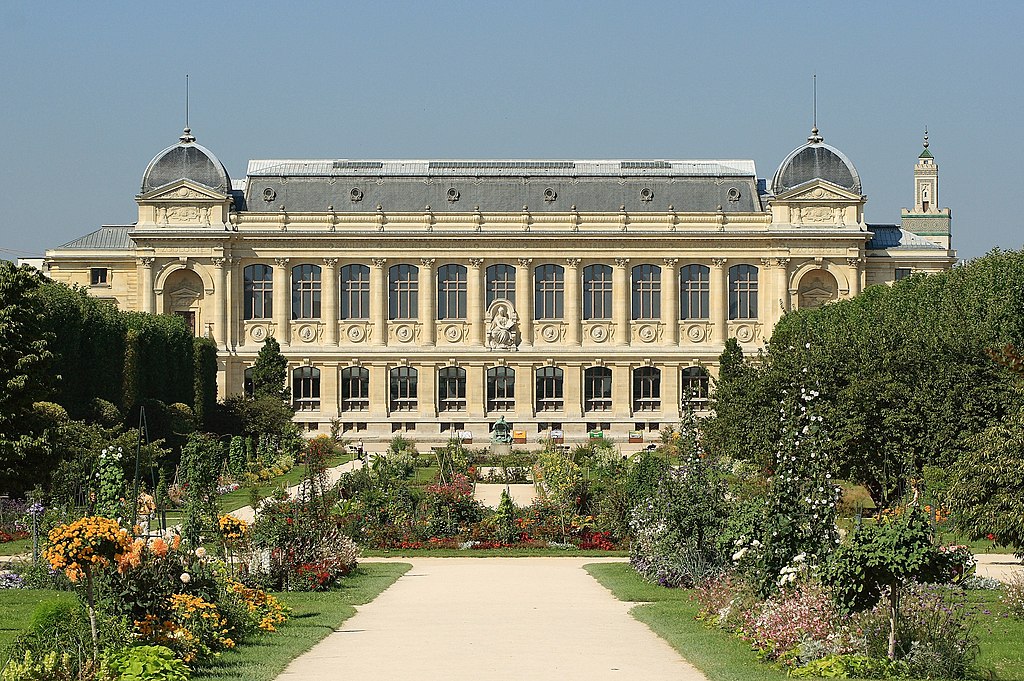Jardin des Plantes
The Jardin des Plantes – Paris, France
The Jardin des Plantes or Botanical Gardens, dates back to 1626, when Herouard and Guy de la Brosse, the doctors of Louis XIII, established the Royal Garden of Medicinal Herbs, opened to the public in 1650.
Its collections of plants were enriched by Louis XIV’s first doctor, Fagon, by the botanist Tournefort, by the three Jussieu brothers, who travelled the world in search of new plants, and above all by the great naturalist Buffon; the latter made the greatest contribution to the gardens, enlarging them as far as the Seine and building the galleries, the maze and the amphitheatre.
At the time of the Revolution, the gardens came to house the National Museum of Natural History. As a result of the work of many eminent scholars, this has become one of the richest and most varied museums in the world.
Visit to the gardens

After passing through the gate, we reach the Botanical garden, its vast flower beds divided by wide paths.
Here are the School of Botany, containing more than 10,000 species of plants, all methodically classified; the Winter Garden, with tropical plants; the Alpine Garden, with collections of plants from the polar regions, the Himalaya Mountains and the Alps. Museum of Natural History.
This is on the other side of the path on the left and contains various sections: Paleontology (fossils, prehistoric animals, casts of extinct species). Botany, Mineralogy (precious stones, minerals, meteorites) and the hunting collections of the Duke of Orleans. In the Zoology gallery are important skeletons, shells and stuffed animals.
Near Jardin des Plantes, on the other side of the Glasshouses (containing plants from South America, Australia, etc.), is the Maze, with its rare plants, including the cedar of Lebanon planted in 1734 by Bernard de Jussieu.
Also worth visiting is the Menagerie, with its wild animals and bird, including elephants, monkeys and so on. MOSQUE – Near the gardens, with its entrance in Place du Puits-de-l’Ermite, is the Mosque, an unusual corner of the Orient here in the middle of the ancient heart of Paris which cannot fail to attract the tourist’s attention.
The Mosque has an interesting courtyard in Hispano-Moorish style, a patio inspired by that of the Alhambra at Granada, and a prayer chamber adorned with precious carpets. ARENES DE LUTECE (Lutetia Arena) – Its entrance at no. 49 Rue Monge, this is the Roman arena of the ancient city.
The exact date of the construction of this Gallo-Roman monument is not known, though it was probably in the 2nd or 3rd century. It was destroyed by the barbarians in 280 and rediscovered only in 1869. At the beginning of this century, it was restored and opened as a park.
The arena had the functions of an amphitheatre, where circus games took place, and also of a theatre. The seating section was elliptical in form, with 36 rows of seats, many of which are now lost. The platform on which the stage was and the circular track around the amphitheatre are still visible. ST-NICOLAS-DU-CHARDONNET – Dedicated to St Nicholas, patron saint of the boatmen, it was built in the Baroque style between 1656 and 1709.
On the exterior, the side door, carved from wood after a design by Le Brun, is outstanding. Interior. In Jesuit style, it has three naves with chancel and ambulatory and contains many works of art. In the first chapel on the right, a work by Corot depicting the Baptism of Jesus; in the ambulatory, in the second chapel on the right, the funeral monument to the Solicitor General Jerome Bignon; in the second chapel to the left of the apse, the tomb of the painter Le Brun and his wife, by Coysevox.
Another work by Charles Le Brun, St Charles Borromeo, is above the altar.

